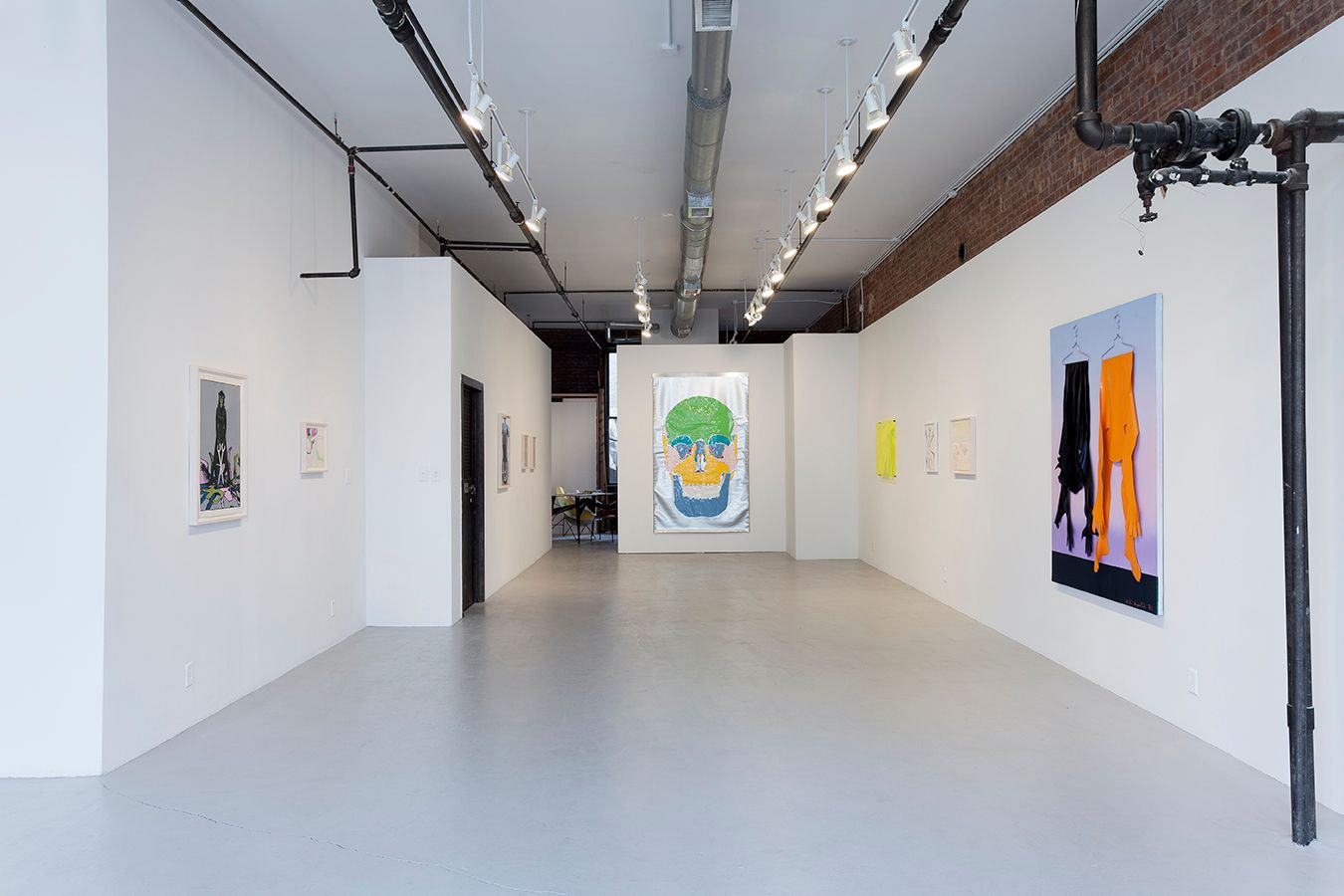The Austrian born Kiki Kogelnik (1935 – 1997) spent much of her working career in New York. Her encounters with Pop art, amongst other things, led her to give up her initial School of Paris inspired abstractions for a compellingly idiosyncratic style that blended together elements of Pop art, a color palette akin to the Chicago Imagists, a deep engagement with science and technology, and first wave feminism.
Kogelnik experimented throughout her career with the formal and conceptual possibilities of painting, drawing, sculpture, and printmaking. Everything she did began from the premise that “art comes from artificial.” The nuanced sense of representation contained in her mantra grounds the assertive and increasingly political works on view here from the mid-to-late 1960s and early 1970s. As with her earlier pieces in which she engaged with the space age and the mechanization of the human body, Kogelnik continues to construct images out of modular and repeated forms, depictions often made with stencils or cutouts, the possibility of chance limited by her cerebral process.
Of growing importance to Kogelnik was the Women’s Liberation Movement. It led her to make art about the gendered construction of subjectivity and the ways in which women were objectified both in the art world and society at large. This is most noticeable in Hanging (1970), in which she presents before a dreamy, airbrushed background two vinyl cutouts—one black the other orange—of a body draped on coat hangers like flayed skin. The containment of the female form expressed here is a theme that recurs in several drawings such as Life Hangs on a String! (1970) and Tongue Operation (1970). Latent in these pieces, as well as many others, is a kind of defiance that ambiguously foregrounds Kogelnik’s identity. Womans Lib (1971), for instance, shows Kogelnik (dressed in a cinched trench coat and wearing giant, opaque sunglasses) aggressively holding a pair of over-sized scissors. A swath of body cutouts lay scattered at her feet. There is a mask-like quality to Kogelnik’s self-representation, as if she has occluded her true identity behind a series of skillfully manipulated representations. This trope continues in the psychedelic memento mori, Skull (1970). Like much of Kogelnik’s art, Skull is at once humorous and tragic, an underlying melancholy buoyed by what is perversely an optimistic image. What makes Kogelnik work from this time so radical and relevant for today is that her trenchant social critique is also a means for her to obtain a sense of liberation and autonomy.
Kiki Kogelnik was born in 1935 in Graz, Austria and died in 1997. She lived and worked in New York, NY; Vienna, Austria; and Bleiburg, Austria. Selected one-person exhibitions include Galerie nächst St. Stephan, Vienna, Austria (1961); the Austrian Institute, New York, NY (1965); Galerie Kornfeld, Zürich, Switzerland (1978); the BAWAG Foundation, Vienna, Austria (1983); the Kärtner Landesgalerie, Klagenfurt, Austria (retrospective), (1989); MAK – Museum of Applied Arts, Vienna, Austria (1996); and Österreichische Galerie Belvedere, Vienna, Austria (retrospective), (1998); Hamburger Kunstverein, Hamburg, Germany (2012); Johann Koenig Gallery, Berlin, Germany; Kunsthalle Krems, Austria (2013). Selected group exhibitions include the Corcoran Gallery, Washington D.C. (1965), the Fischbach Gallery, New York, NY (1965); the Kunsthaus Hamburg, Hamburg, Germany (1972); the Hirshhorn Museum and Sculpture Garden, Washington D.C. (1976), the Kunsthaus Zürich, Zürich, Switzerland (1978); the Los Angeles Institute of Contemporary Art, Los Angeles, CA (1978); the Secession, Vienna, Austria (1983); the Museum Het Paleis, The Hague, The Netherlands (1997); The Israel Museum, Jerusalem, Israel (1999); the Museum of Fine Arts, Budapest, Hungary (2001); Kunsthalle Krems, Krems, Austria (2003); Kunsthalle Wien, Vienna, Austria (2010); Brooklyn Museum, Brooklyn, NY (2010), Louisiana Museum, Denmark (2012); Barbican Center, London, UK (2013), Stephen Friedman Gallery, London, UK (2014). Kiki Kogelnik’s work will be featured in the upcoming exhibition The World Goes Pop at the Tate Modern, London, UK (2015)














































































































